Choosing the best grain mill to grind your own flour at home can be tricky. What should you look for? It’s my opinion that every kitchen should experience the benefits and flavor of grinding your own fresh-milled flour. And to do that, you need to make sure you’re choosing the best flour mill for your house.

This post was previously written to go along with Pioneering Today Podcast episode #64 (which you can listen to below) but has since been updated with my podcast interview with Bonnie from GrainMaker (episode #458).
Why I Love Grinding Grains
Flour milled at home is healthier and fresher, plus it makes me feel like a true pioneer woman.
Do you ever wonder about the flour you purchase from the store? While I’ve been baking our own bread for almost a year and a half now, I’ve been using store-bought flour. I know our bread is now preservative-free, but what about the flour, the main ingredient?
My desire is to be as self-sustainable as possible. I also believe it’s the healthiest way to live. I started researching the benefits of grinding your own flour at home, and let me tell ya, there’s a ton of nutrition we’re missing out on (I won’t even mention the flavor) by not grinding our own flour.
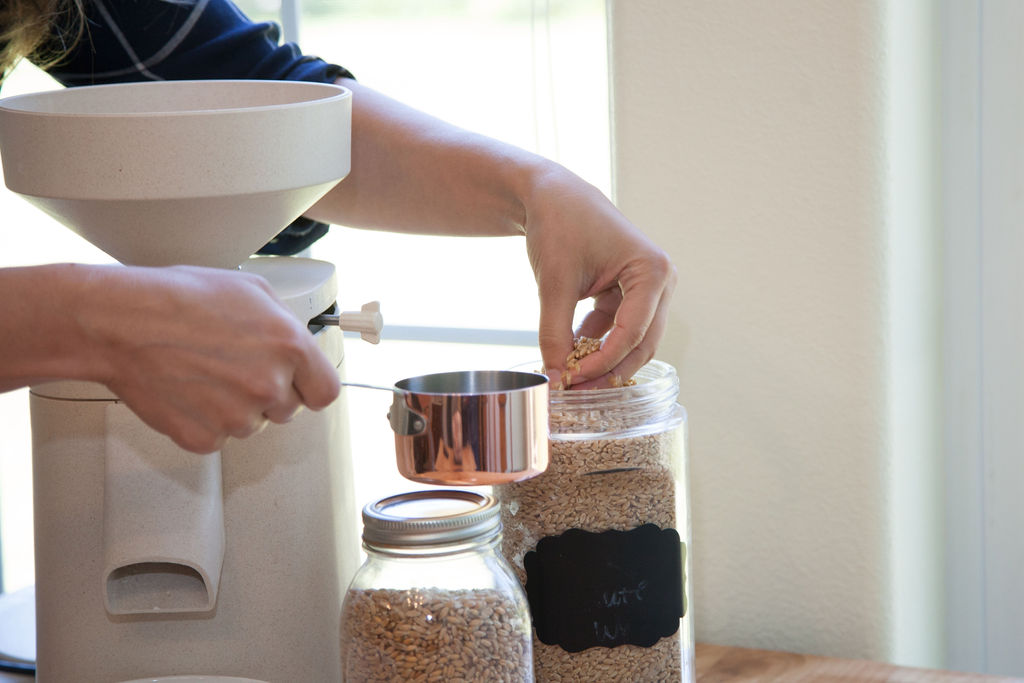
How to Choose the Best Grain Mill
When you grind it at home, you’re leaving in all the nutrition. It will store for about three days at room temperature, or you can store the ground flour in the freezer for up to six months.
When you grind a whole wheat berry (it looks like a piece of grain, not a berry), you grind the bran and germ into your flour. Because the germ has oil in it, the flour can turn rancid, so it’s removed in commercial flour to be shelf-stable.
However, most of your fiber, vitamins, minerals, and antioxidants are in the bran and germ.
Disclosure: I received my Wondermill and Mockmill for free over ten years ago, regardless, this is my honest opinion of all the grain mills I’ve owned or tried.
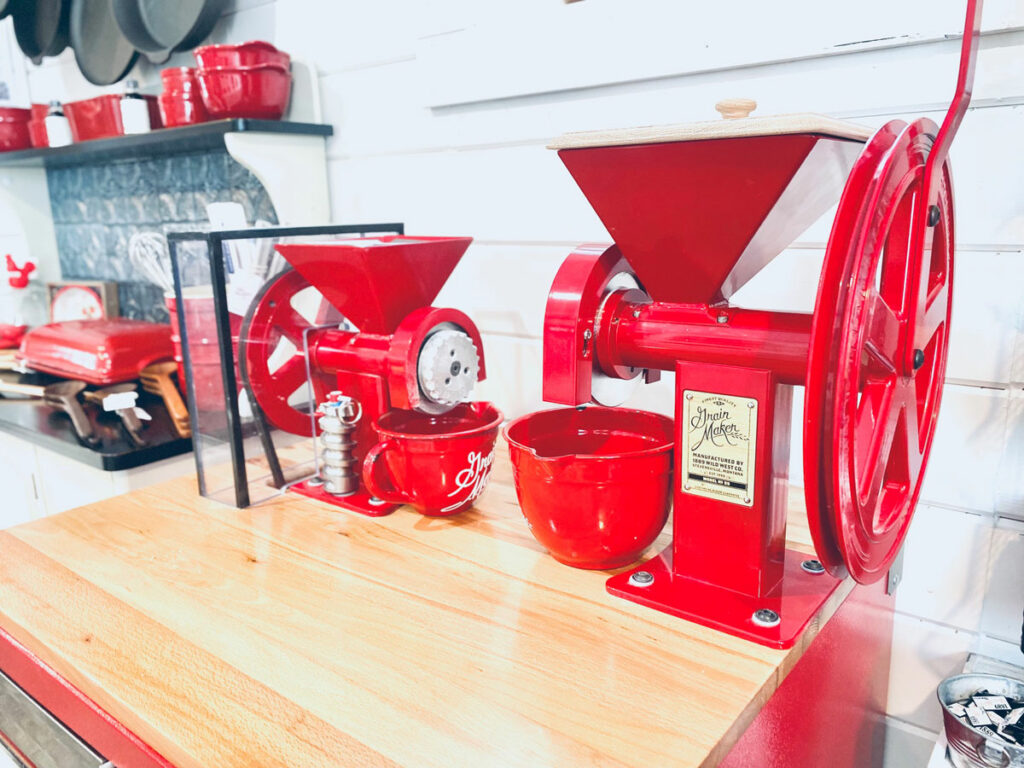
Subscribe to Melissa K. Norris!
Get updates on the latest posts and more from Melissa K. Norris straight to your inbox.
We use your personal data for interest-based advertising, as outlined in our Privacy Notice.
Manual or Electric Mill?
Your first decision is to decide if a manual grain mill or an electric grain mill is the right fit for you. There are some pros and cons to each (more on that below).
For my quick picks on each, keep reading:
Best Manual Grain Mill
If you’re looking for a manual grain mill, there are a lot more options than there used to be. GrainMaker has multiple options varying in both size and cost.
There are also options like this Wondermill Deluxe Hand Grain Mill on Amazon that mounts to the counter. A third option for a manual grain mill is the Victorio Hand Operated Mill.
Manual grain mills are a great way to increase your resiliency and still be able to grind grain when the power is out. Thankfully, we now have a more powerful generator that allows me to use my electric mill, even when the power is out, but I still like the peace of mind knowing I can use a hand-crank mill when I need to.
Wheat berries, when stored correctly, are shelf-stable for years. So having a way to grind them into flour is a fantastic way to be prepared.
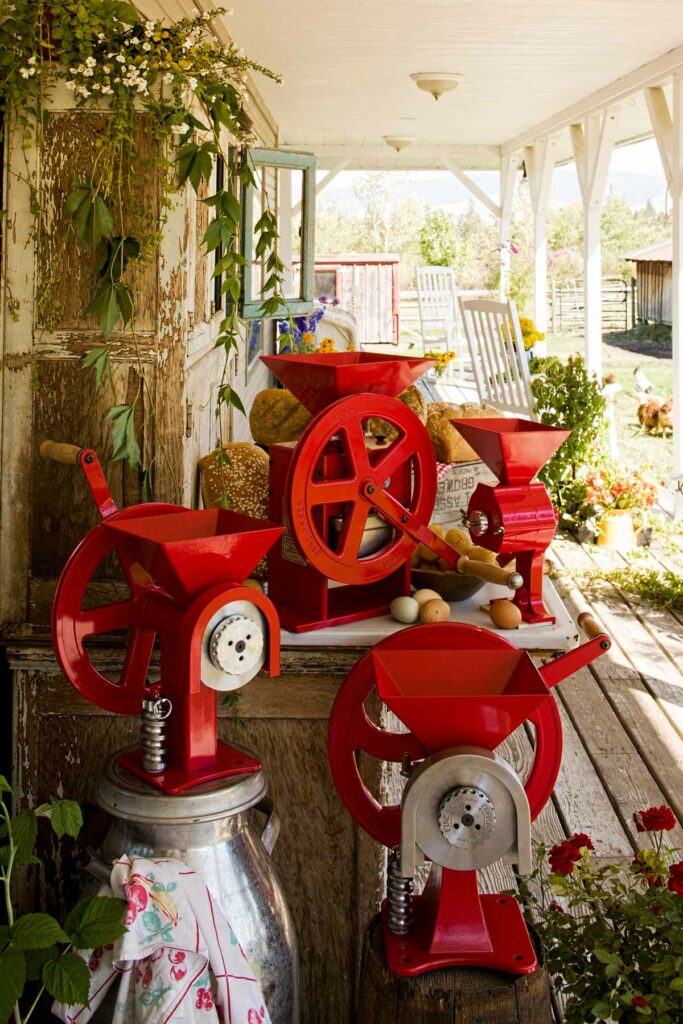
Pros vs. Cons
| Pros | Cons |
| Oily Products: When using a manual mill, you can grind oily grains, nuts and seeds to make your own nut and seed butter without the fear of gumming up your mill. | Time: It takes much longer to grind up your flour with a manual mill than an electric one, especially if you need to grind up a large amount in one sitting. |
| No electricity: No need for electricity when using a manual grain mill. If the power goes out due to a storm or unforeseen major catastrophe, you can still grind your own flour. | Freshness: Because I love to grind my grain right at the time of baking, it’s less likely I will pull out my hand-crank mill to do so. The ease of my electric mill sitting on the counter means I’m using it multiple times per week. Though there are ways around this if a manual mill is all you have, it’s worth mentioning. |
| Nostalgia: I love vintage and antique items in my home. A hand-turned flour mill definitely says vintage! | Mounting to Solid Surface: A manual grain mill must be mounted to a table or countertop, making it a permanent fixture in your kitchen. |
| Toned Arms: OK, so this may not be a big selling point on the manual grain mill, but you can multitask arm day while grinding grain into flour! |
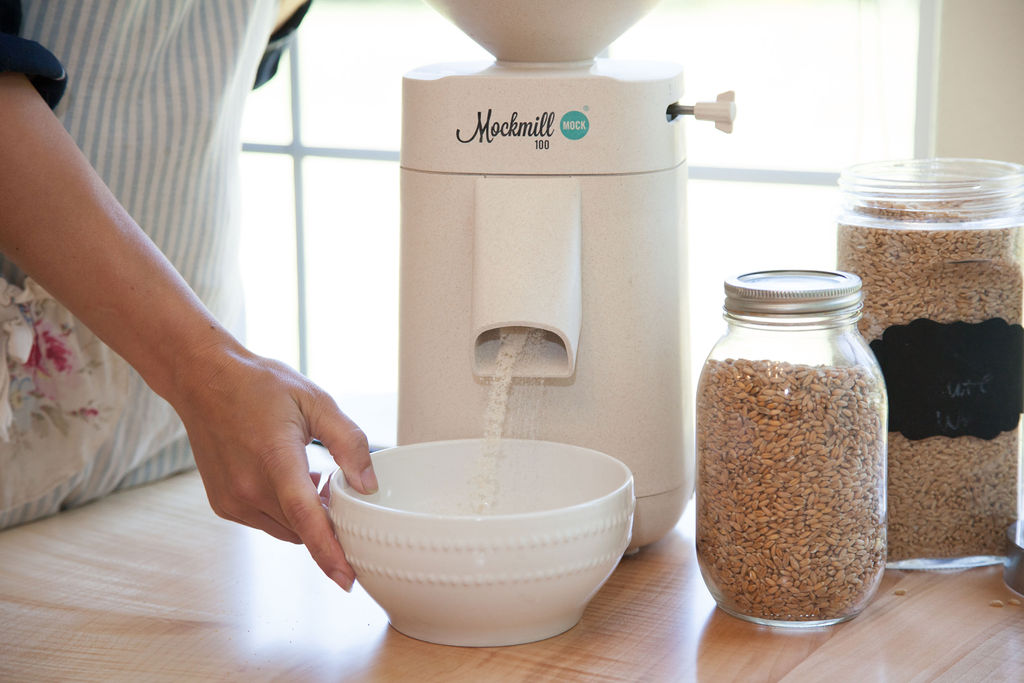
Best Electric Grain Mill
I used a Wondermill for years, but about ten years ago, I received a stone burr Mockmill 100 and you guys, I can’t believe the difference.
It’s sooo much quieter, no parts to hook together, and the ability to adjust the grind goes beyond any mill I’ve seen.
Not only can you grind flour, but you can grind all your gluten-free flours, vegetables (yes, vegetables into powders), spices and more. With one mill! Plus, it makes the finest whole wheat pastry flour.
Once you have your grain mill, be sure to check out this post to learn how to bake with fresh flour.
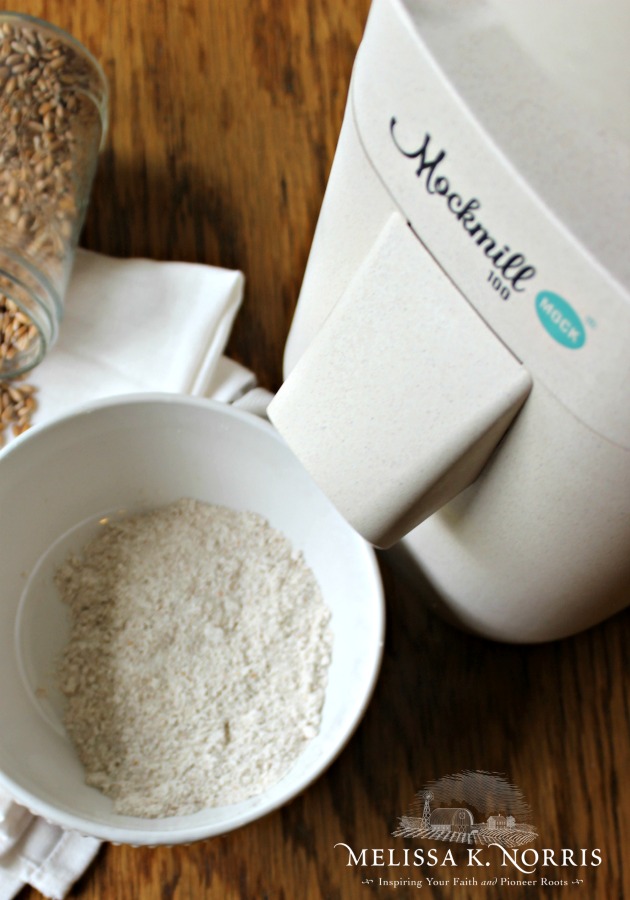
Pros vs. Cons
| Pros | Cons |
| Ease of use: You simply plug it in, flip the switch, and pour in your wheat berries. No clamping down to anything. | Noisy: It sounds like a vacuum cleaner. |
| Fast: I ground up 6 and 1/2 cups of fresh flour in less than 3 minutes. | Dependency on electricity: It does require a power source. |
| Adjusting the grind: Adjusting the grind on an electric grain mill is as simple as turning a switch. The hand-crank grinder I have has five different settings for setting the fineness of the grind. The Mockmill can adjust the grind with over 20 settings. | No oily products: You can’t put anything oily through electric grinders. It gums them up and will make them useless. |
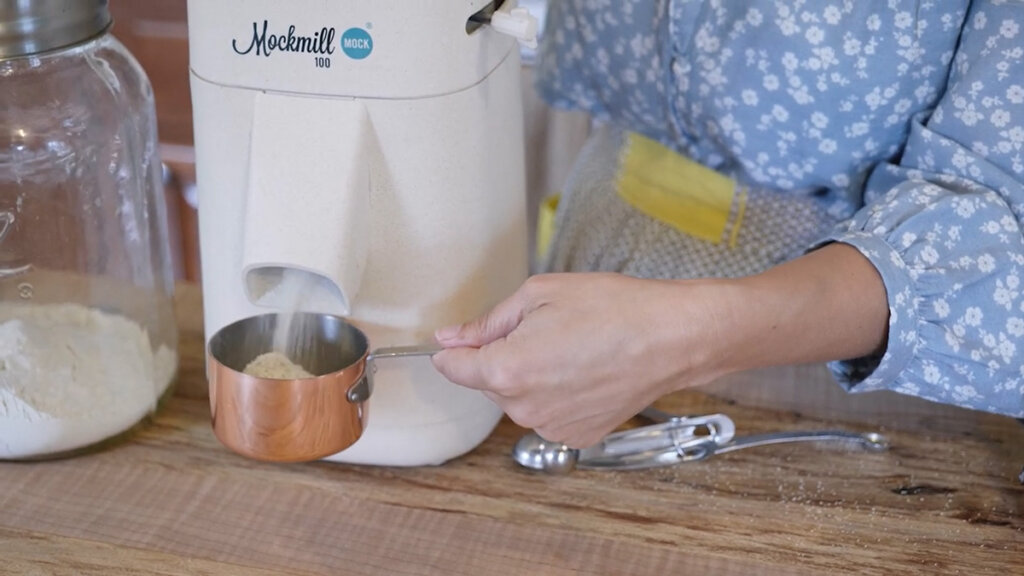
Mockmill, Blendtech, GrainMaker or Wondermill?
I’ve had my Mockmill100 for many years now. It’s much quieter than both the Blendtech and the Wondermill and it doesn’t jump around on the counter while it’s grinding.
Plus it’s a tabletop electric stone grain mill for home use with a slim profile that fits under most upper cabinets.
However, it was very important to me to also have a grain mill that I could use when/if the power goes out. That’s why I’m a happy owner of both a Mockmill and a GrainMaker hand-crank mill.
Cost
Mockmill
First, the initial price of a home flour mill isn’t cheap, so be prepared to spend between $300-$800, depending on the model.
However, Mockmill also has a KitchenAid attachment that has a lower price point (just over $200). It won’t grind as much flour at a time, but it’s a great option if you just can’t quite swing the countertop version quite yet.
BlendTech
The BlendTech models come in just under the Mockmill at about $269 (at the time of this posting). There are fewer options when it comes to BlendTech, and the construction of the design left something to be desired (in my opinion).
Nutramill
The NutraMill is very comparable to the Mockmill, priced between $300-$400 for their models. They do have two options, but no KitchenAid attachment option at this time.
GrainMaker
GrainMaker is 100% made in the USA! It’s a hand-crank mills that varies in price from $500-$1400 (though I doubt many of us will need The Workhorse model). Bonnie shared in the podcast interview that the GrainMaker mills can actually be motor powered, or even set up to be powered by a bicycle!
Warranty vs. Guarantee: Bonnie shared the difference between a warranty (which is for a limited-time) and GrainMaker’s Heirloom Lifetime Guarantee (which covers every part of the mill for life, even if the mill is handed down to the next generation!). That’s a pretty big selling point in my book!
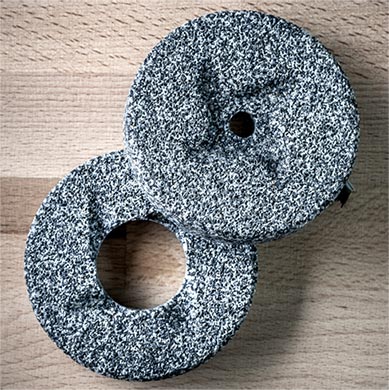
Why a Stone Mill is Better
The burrs. These are what grinds the food into flour and are probably the most important part of your mill. There are 3 different types of burrs on the market, steel, cast iron and stone.
Steel and cast iron burrs do a decent job (this is what my old Wondermill had and what the GrainMaker hand-crank mills have) but you can’t get as fine a grind and they tend to heat up, causing the flour to come out hot (which some believe impacts the nutrition value).
The Mockmill is the only model I know of that has stone burrs, which is another reason it’s at the top of my recommendations.
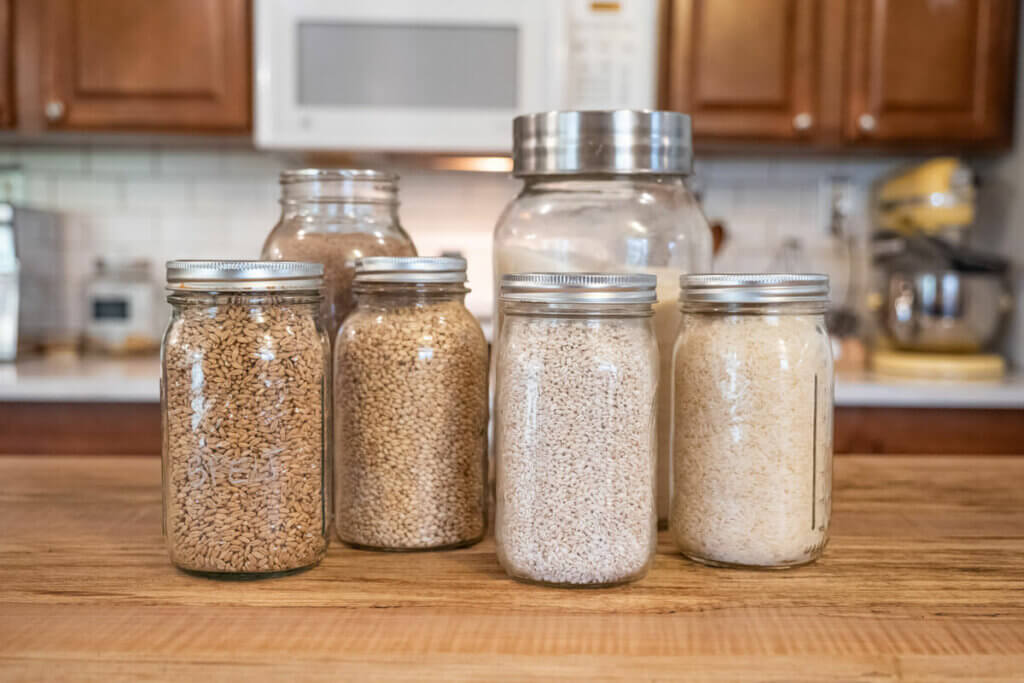
Conclusion
A grain mill is a spendy kitchen appliance. I like to view it as an investment, not just in your kitchen, but in your and your family’s health.
If you use it often, the mill will eventually pay for itself. Wheat berries are much less expensive to buy than ground flour. Furthermore, a cup of wheat berries yields approximately 1 1/4 cups flour.
Wheat berries store much longer than bags of flour, increasing our food storage.
But there is a learning curve! Ask me how many loaves of bread turned out rock hard when I first started. That’s why I’m sharing the tips I’ve learned to use fresh ground flour to convert your favorite recipes and get delicious food, every time.
There you have it, how to choose the best grain mill to grind your own flour at home. Which one did you go with?
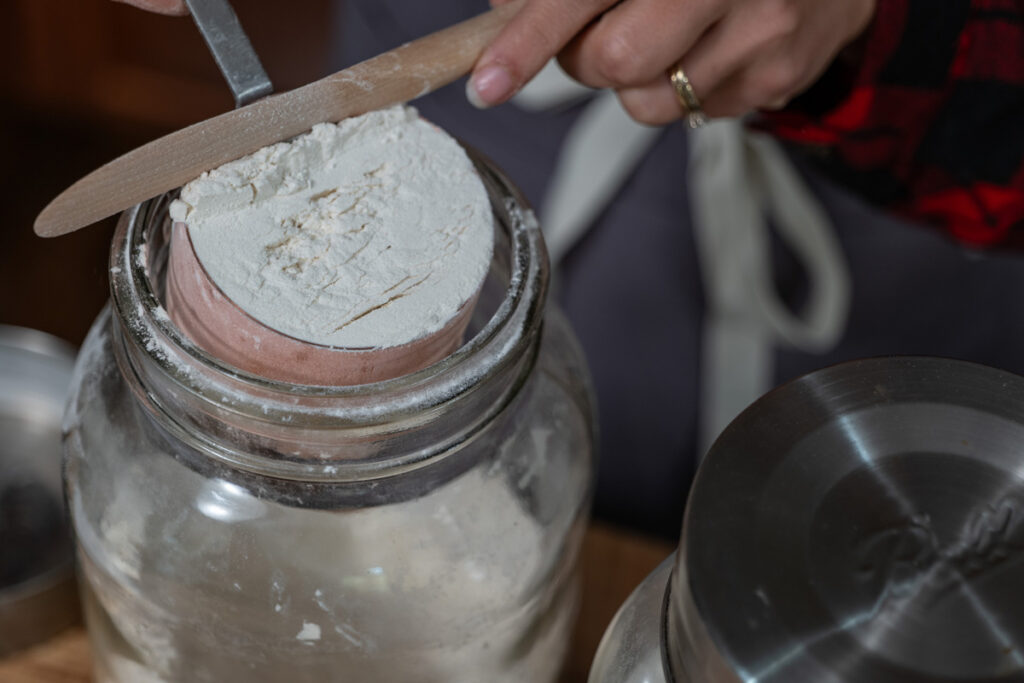
More Posts You May Enjoy
- Where to Buy Grains in Bulk
- Ancient Grain Einkorn- Health and Baking Guide
- Best Flour for Baking- Home Baker’s Flour Guide 101
- The Gut-Brain Connection (Info for Better Health)
- Must-Have Homestead Kitchen Tools for Better From-Scratch Cooking
- 10 Time-Saving Hacks Using a Bench Knife
- Sourdough Baking Tips & Tricks for Success
- Easy No-Knead Artisan Bread
- How to Store Homemade Bread
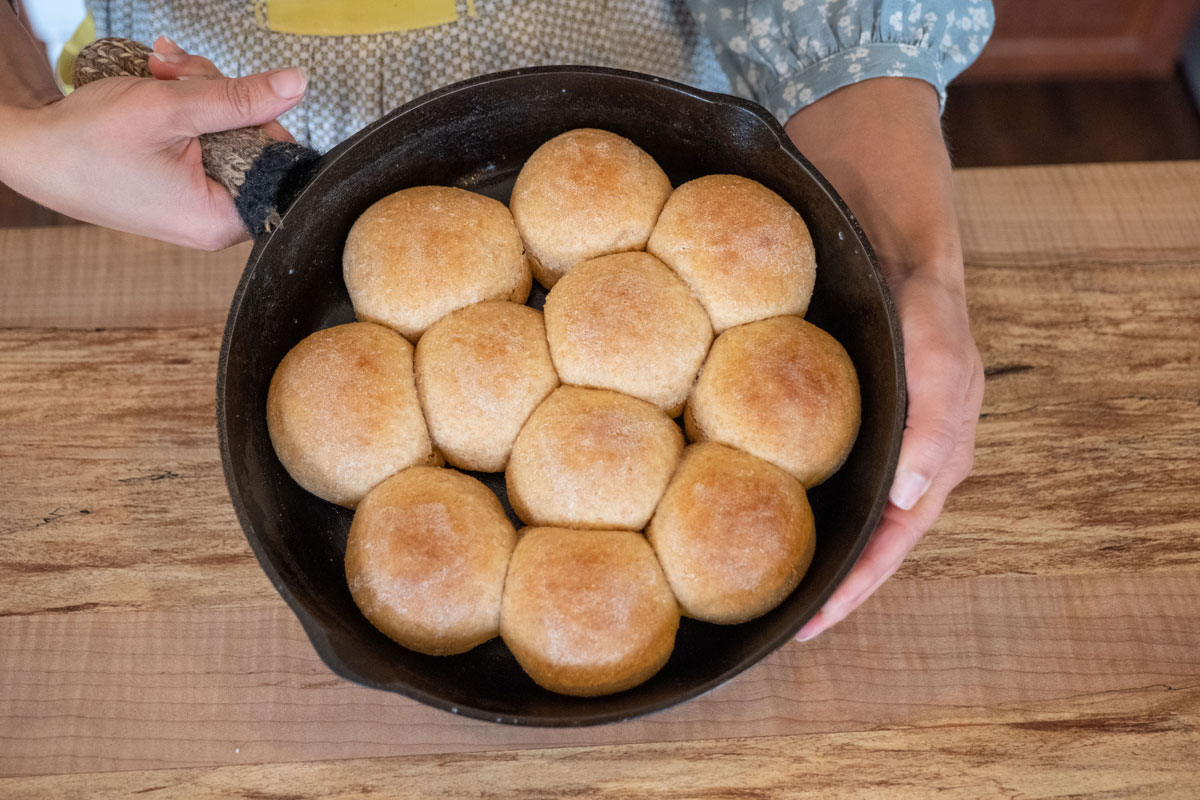

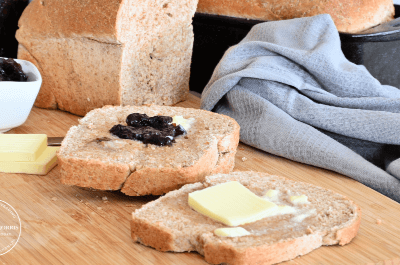
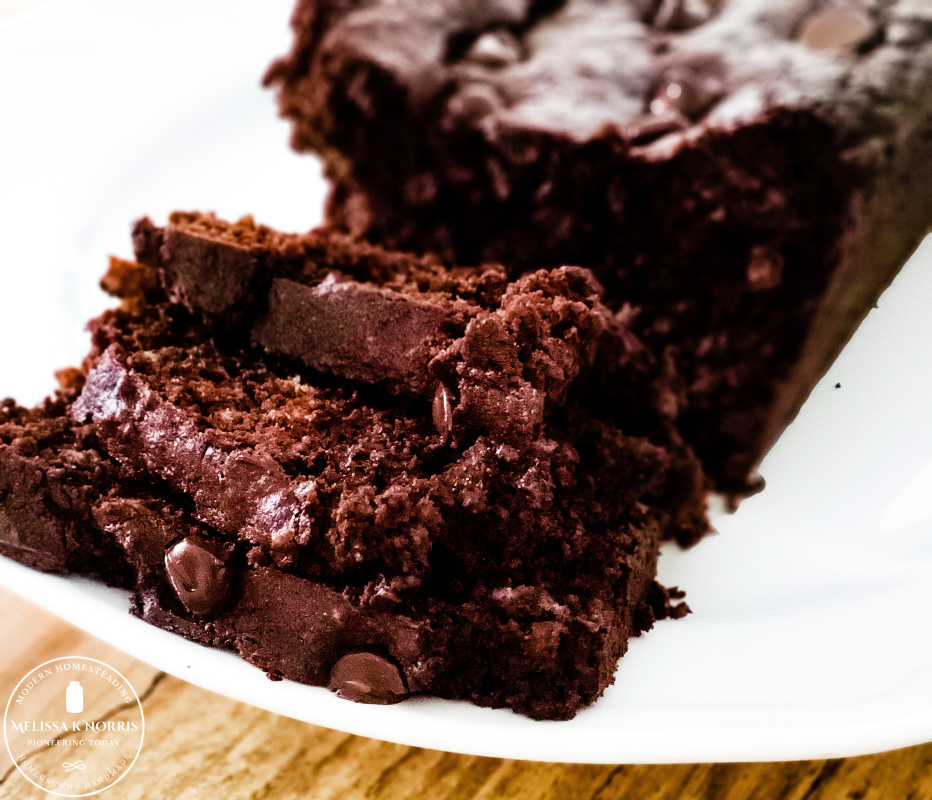
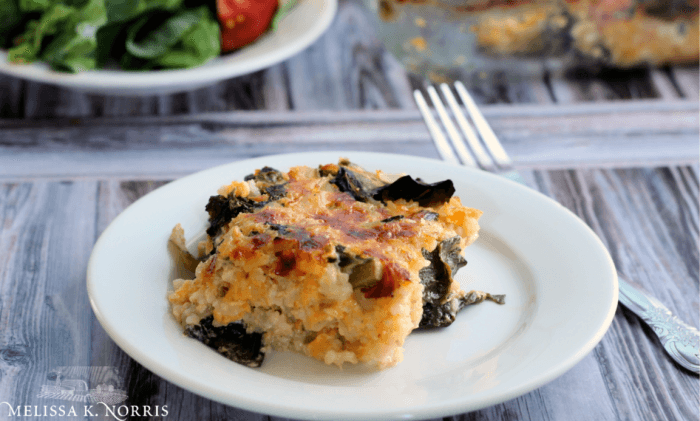
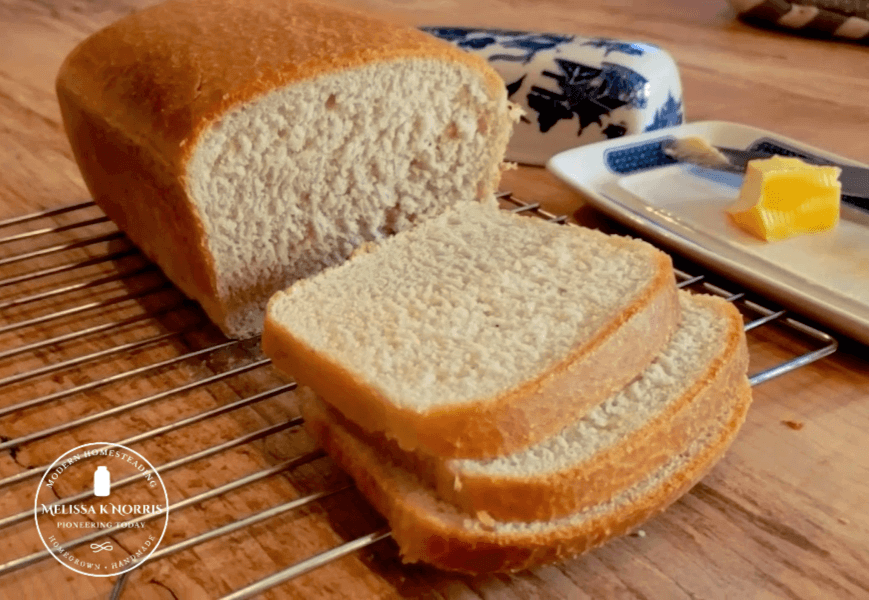

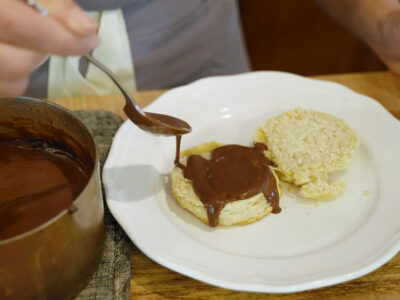
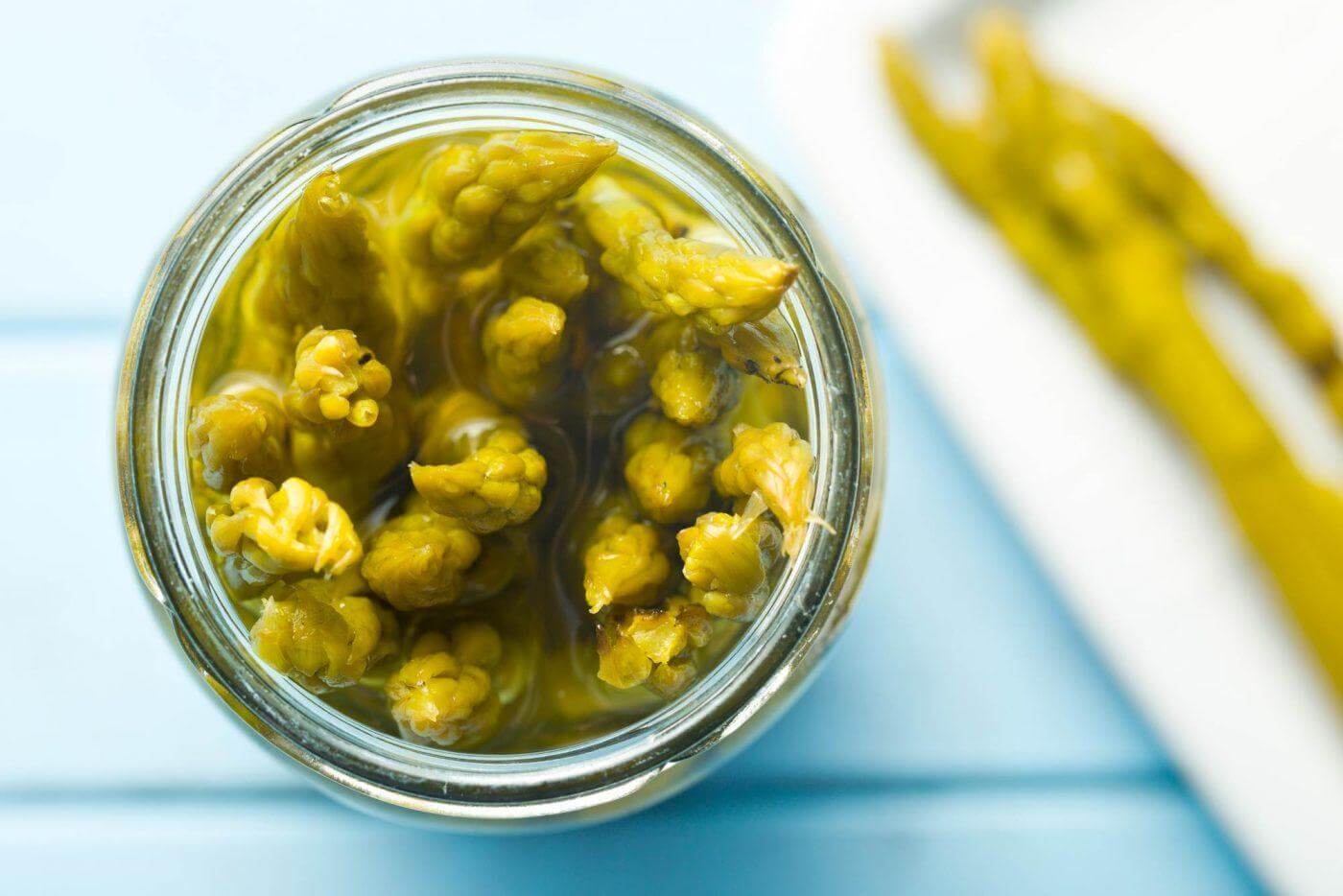

Podem recomendar outros blogues/sites/fóruns que tratem dos mesmos temas?
I’ve been using the Mockmill attachment for my Kitchenaid mixer and love it! I grind wheat and corn with ease.
I recently got to see the Mockmill 100 in action when my neighbor was trying hers for the 1st time to grind corn for cornbread.She has issues getting a finer grind and I realized that model only has one speed, and it’s faster than I use to grind corn. Also, the stones are set horizontally where mine are set vertically. It seems to be making a difference in getting a finer grind with corn.
Fiquei muito feliz em descobrir este site. Preciso de agradecer pelo vosso tempo
Does anyone have experience with the Komo Duett 200? It seems to be a dream machine for homesteaders since it’s a grain mill and a grain flaker. The 100 has the motor of the Komo Classic and 200 has the motor of the Komo XL. I am *BRAND NEW* to milling wheat. I was going to purchase an entry level electric mill, but the ones with an acceptable level of fine-ness are over $400. Better to bite the bullet now and make the investment to the best & most versatile mill. I will be encouraged to keep up with the milling due to my investment (that’s the thought process, anyway). Any help, guidance, tips for a newbie are much appreciated & welcome!
I have a Magic Mill grinder I haven’t used It in about 20 years ? Do they still make them? ??♀️ It is very loud(sounds like an airplane ✈️) It has adjustable settings too. It does a great job. I used to put dough enhancer in my bread, do you have any pros or cons on it?
is the dough enhancer gluten? if so, in essence you might as well use a mix of all purpose and whole wheat. much cheaper to add enough all purpose to your whole wheat to get it rise well and have a desirable “chew”.
I have 2 magic mill because mine is 30+ yrs old so bought a second one off eBay because like you I didn’t know about parts and I still love it but it’s loud and dusty, was wondering about a mock mill. I’m gluten free so do a lot of rice flour.
I just tried to order the mockmill 100 but it is out of stock and put me on a waitlist. Will I still get the promotional offers like free shipping, 5% off, books etc. when it becomes available?
Yes they should still apply 🙂
Thanks to this blog post, I’m convinced that it’s time to upgrade from my Kitchen Aid stand mixer grain mill attachment to a Mockmill (mainly because I’m not getting a fine enough grind to allow me a full range of baking). However, I have one question. You mentioned that “the Mockmill has the ability to adjust the grind with over 20 settings” but, when I look at the pictures of the Mockmill, I only see 10 settings indicated on the machine. Can you please explain about the 20 settings? Thanks! I’m looking forward to expanding my repertoire with a new mill!
I ordered the Mockmill 100 but did not receive the 5% discount. Do I need a code?
It should have applied automatically to your order at checkout but shoot me an email so I can forward it to my rep at the company [email protected]
Do you know anything about the metal grain grinder attachment to a kitchen aid mixer?
Hi I have that. I have hard time getting fine flour, run through a couple times doesn’t seem to make difference ?♀️?therefore my breads pretty Dense.
It’s a KitchenAid
I have put my name on the waiting list for a Mockmill 100. Any estimate on how long it will be before then new ones arrive?
I checked their website. There is no mention of their location and the return policy is an empty page.
Greetings Melissa. I am so new at this, I squeak, so please bear with me. I bought wheat berries and tried them in my Omega juicer. That looked like a very long, slow process, so I tried my Vitamix. I was so excited … it actually looked like flour after one minute of grinding one cup of berries. I made bread yesterday and could tell right away that the flour was coarser that I first thought (actually a little grainy, which I haden’t noticed at first). The bread was ok, but kind of tough. I saw the information on the Nutrimill and the Mockmill. My question is, will either one of these produce a very fine flour? And I see the Mockmill 100 is $300. The Nutrimill Classic is on Amazon for $235. Which would you get if you had the choice (as long as one of them truly makes a very fine flour)? Thank you for any help you can give.
I haven’t tried the Nutrimill but the Mockmill allows me to adjust the grind finer than any other grinder I’ve had or used, a Blendtech, Wondermill, and manual mill. The Mockmill is also running a special here through the end of the month https://mockmill.com/u/thb/?promo=18H13V&a_aid=melissaknorris&utm_source=collab&utm_medium=melissaknorris&utm_campaign=18H13V
an impact type mill makes fine flour–and nothing else. so you can’t coarse-grind corn for meal, but you can get a nice wheat (or other grain) flour.
Hi Melissa. I’m wondering about the MockMill attachment for stand mixers (I have a KitchenAid). Does it work as well as the stand-alone MockMill? Have you tested and reviewed it? Also, does your deal work for Canada? I’ve seen distributors who carry the MockMill for distribution in Canada, but not sure if your promotion includes Canada. Thanks!
Is the 6 year warranty you offer different from warranted on all the Mockmill s from manufacturer?
All warranties are from the manufacturor, not me personally.
I grinded my whole wheat flour and since it was hot – i left it out for an hour. I forgot to put it away before bed and now it was left out overnight. I normally just let it cool then freeze it and use when needed. Is this flour still ok to use?
It’s fine to use and freezing will help if you grind too much, but 24 hours after being ground (if not used in a recipe) the nutrition value falls dramatically. For the highest nutrient levels (which is one reason most of us grind our own) it’s best to grind right before using in your recipe or as close as possible.
Hi, I’m eating low carb and am looking for a way to grind my own almond flour and coconut flour. Especially almonds are oily, do you think a handmill would be able to handle them?
Hi, I recently purchased a mill from your site.
Can you confirm that the Einkorn Wheat Berries & Grand Teton Hard White Spring Wheat are already cleaned to the point of being free of small stones and other non-wheat particles?
I’m just starting with milling, and I want to make sure I’m not ruining my mill stones, etc.
If you could also point me to a good resource involving how to clean those things (stones, etc.) out of wheat berries, I would appreciate it!
Thank you.
The wheat berries will depend upon where you purchased them from so I don’t know if your Einkorn berries or the Hard White are free are not. I haven’t ever had any issues with mine. You can do a visual inspection. If you see stones or other debri you can try and use a fan to separate the chaff (winnowing) from the berries.
Sorry, to be more specific, I meant those Einkorn berries and Hard White that you provided free with my purchase of the mill. Are they supposed to be clean and free?
Thank you!
You can still give them a visible inspection but all of the Einkorn berries I received with my mill have been free. I didn’t get the (I’m not the actual one shipping them or selling the mill, that’s through Mockmill, but I am an affiliate for them and use them) hard white but I’m assuming it’s fairly clean if they’re sending them out. It never hurts to examine a few handfuls from each bag though.
How about the grain mill attachment for your kitchen aid? Is it OK?
Hi Josh, it’s okay as long as you’re just using it occasionally and for small amounts of flour. If you’re planning on grinding most of your own flour and do a lot of baking (bread, etc.) that uses quite a bit of flour at once, you’ll want to invest in a regular mill.
Nice information, I was not aware of such methods. Thank you very much for the valuable information!!
I love my NutriMill. It is easy to use, easy to clean and easy to store. I use the fine settings for milling wheat for flour, but I use the coarse settings for milling popcorn to make cornbread. After using it for several years, I missed a pebble when I cleaned my locally grown wheat. It broke some of the teeth off the milling heads. I emailed the company, and they sent replacement heads free of charge! That is the only problem I have had with it in ten years of use.
Also, when I add flax seed to recipes such a muffins, I don’t put it in the mill because it is too sticky. I bought a small coffee grinder for less than $10, and I use it exclusively for flax seed.
Have you tried using a Vita Mix blender with the dry blender to grind flour?
I haven’t. I know some people do, I think it would depend upon how much flour you were grinding and how often. 🙂
Any comments or opinion of how well the grain mill that attaches to the kitchen aid mixer works.
I don’t have it, but I”ve heard from several folks that if you plan on using it a lot or making it your primary flour use, that it will burn out the motor.
I live in Ecuador and am searching for a grain supplier in order to start making my own flour. In the course of my search, I found “trigo pelado,” which is “peeled wheat.” Unfortunately, as a newbie to this, I don’t know what the wheat grains ready to grind should look like. I don’t know if that means only that the inedible parts of the plant have been removed or if something important to whole grain flour has also been removed. It’s hard to figure it all out. Could you give me some guidance in this area, perhaps some photos of the grains you use when you are grinding flour? I would sincerely appreciate any help whatsoever with this, Melissa! Thank you. Sincerely, Laura
Thank you. I am anxiously awaiting my hand grind mill. Not sufficient $$ in the budget at present for an electric mill. That is one of the next things on my “wish list”. I think your blog is awesome and am looking forward to having a bit of free time (is that actually possible) to real all of it.
Hi there! I have a vitamin dry blender. Would it work well to make own flour?
Homesteading,what a life. Not much around here comes from the store. We have a huge 1 acre vegetable garden. 20 fruit trees, goats, chickens and wild critters to help fill the freezer. We can fruits and vegetables, meat and fish. My mother got me started years ago. So I carry on. I bake a lot of bread and would like to grind my own floor. Just raised a good crop of Indian corn last summer. I have been gleaning it. Thought I had a friend with a mill to borough and She got rid of it because it was to much for her.So I am looking. Thanks for the information ,it sounds good. I just got through rebuilding an old manure spreader so now Im getting the corn ready. In 2 weeks I will be making maple syrup. We live in Michigan and have a very good climate. Lakes and streams full of fish and forest full of game.
Hi Melissa! What about whole grain flour in the stores? I don’t believe it can be sold as whole grain unless the bran and germ are not removed from the berry. There are no enriched ingredients listed. Am I missing something? Thank you!!
Hi Rhea,
It’s my understanding that it won’t remain shelf stable for an extended period of time if the germ is left in, that it will go rancid relatively quickly. I would contact the company with the specific brand you’re looking at and ask them for clarification if possible. The other part is once flour is ground and exposed to the air, the nutrients break down fairly quickly so you get the most from the flour if you grind it fresh and use it that day.
Where do I buy the wheat berries?
Jen,
Most grocery stores with a whole food/bulk section carry a few kinds, here’s my info on purchasing on my Baking with Fresh Ground Flour article
Where to purchase wheat berries?
I purchase my wheat berries in 50 pound bags from our local co-op. I get a 10% discount from purchasing in bulk. We use 50 lbs or organic hard white wheat and 50 pounds of organic Spelt berries in a year.
Don’t have a co-op? No worries. You can purchase bulk bags on-line if you don’t have a co-op or local grainery near you. The best deals I’ve found on-line are actually from our affiliate partner Amazon and is a Washington state company! Go home state, go home. This is Non-GMO verified, kosher, hard white wheat *affiliate link from Palouse available in 3, 5, and 25 lbs. bags. Bob’s Red Mill has organic spelt wheat berries *affiliate link and you may be able to find it locally. I have found hard red wheat at almost all grocery stores, but spelt has been the hardest for me to find.
You’ll find this article helpful when cooking/baking using fresh ground flour https://melissaknorris.com/grinding-flour-6-fresh-flour-baking-tips/
Thank you for your reviews! I make all our own bread and have been buying 50 lbs of flour at our Amish bulk food store. It’s inexpensive, so I haven’t really thought of grinding our own. I have in the past used my vitamix, which does a pretty good job.
Glad you enjoyed it Jennifer!
I’ve not used the Vitamix, but I know others have. I really enjoy grinding our own flour and the added nutrition benefits. How neat you have an Amish bulk food store near you. That must be really cool.
Do you have any recommendations for where I can buy high quality grains? I want to find a farm/supplier that sells organic non-gmo grains without harsh chemicals.
Yes, this is a farmer that is verified non-gmo. Here’s their product list from our affiliate amazon https://www.amazon.com/gp/search/ref=as_li_qf_sp_sr_il_tl?ie=UTF8&tag=wwwmelissakno-20&keywords=palouse wheat&index=aps&camp=1789&creative=9325&linkCode=xm2&linkId=7ea733fdceacc9a0d9447de4809a2de0
Hi Melissa, I sure enjoy reading your articles and thank-you for all the great ideas and recipes! I’m in Montana, visiting my son for the month and it’s of course wheat harvest time! as I was watching all the lovely grain pouring into the auger last night I was remembering your bread recipe and wishing I could grab some of this wonderful grain and grind it myself. Would you know of a cheap little appliance/contraption of some sort that I could experiment with as a one time thing while I’m here? I would love to try your recipe using hand-ground wheat instead of store bought. Thank-you, and keep up the great work!
Susan,
How much fun! If someone has a Vitamix or strong blender, I believe it will grind grain. A coffee grinder might work too, but I haven’t tried that personally.
Great post! Thank you for helping me understand the benefits of grinding my own things. I really like how you explained that “When you grind a whole wheat berry (it looks like a piece of grain, not a berry), you are grinding the bran and germ into your flour. Because the germ has oil in it, the flour can turn rancid, so it’s removed in commercial flour. But most of your fiber, vitamins, minerals, and antioxidants are in the bran and germ.” I have never used a grinding machine before but it is cool to know that using one will help to ensure that you get the nutrients that you need.
Thanks Rockford, I’d love to hear about your adventures if you start grinding your own flour.
I have a kitchen aid stand mixer and the grinding tool for it, so that is what I will start with. I also have the pasta roller and the cutter for fettuccine. So when I grind the flour, I will make some pasta.
I live in the Tampa Bay area of Florida and I need to know where to get the wheat to grind.
I use the Mockmill for Kitchenmaid and I LOVE it!! it is easy to use, works flawlessly each and every time, super easy to clean and it was affordable! My kids love to use it and I even do my own ground cinnamon and spices! Cheers to good health!
Hola! I’ve been reading your website for a while now and finally
got the courage to go ahead and give you a shout
out from Humble Tx! Just wanted to tell you keep
up the good work!
I realize not everyone can afford one, but I just have to say we love, love, love our Grainmaker hand mill. It grinds flour as well or better than the Diamant grain mill (often considered the Cadillac of hand grain mills), but it costs several hundred dollars less and is made in the good ole’ USA. They also have a lifetime warranty on the mill (including the burrs! I don’t think any one else does).
I have a Wondermill and it works great. I primarily use hard white wheat for bread. One thing I found out just recently really floored me. It seems that some farmers have started spraying Roundup just prior to harvest. It causes the wheat grains to loosen in the head, thus increasing yields. However, it stays on the grain. I for one would prefer my food without poison on it. There’s no telling how much of these chemicals are in our food supply. I’m going to start buying organic wheat from now on. Honeyville carries organic as well as inorganic. We live in a scary world these days.
Nancy,
I’m really happy with my Wondermill, too. I only buy organic wheat now, too. Spelt and Hard white are my main two.
I have a Vitamix and I have the dry container which is meant for grinding grains but I have not tried it yet. Anyone have experience with this? I have a feeling it will work well, as I have never been disappointed with this machine. And it is fab for making nut and seed butters by the way!!
I have read some comments but not all, so forgive me if someone else brought this up. You may want to rethink grinding large batches of flour and storing it: “Once the kernel of wheat is broken open, however, as in milling, the protection of the bran is gone and many of these nutrients, now exposed to oxygen, are lost by oxidation. In fact, once milled, as much as 45% of the nutrients are oxidized, in the first day alone. In 3 days, just 72 hours later, 90% of the nutrients are lost, all to oxidation alone and none to the sifting of the bran and germ.”
http://info.breadbeckers.com/deception-of-enrichment/
Karen,
That’s an excellent point. I grind my flour as I use it, but I did recommend having a small amount in the freezer for those who don’t have a manual grinder for when the power goes out, that may have been the source of confusion.
I have a Nutrimill, love it. I have used it for bread flour and spelt flour, ( have a excellent spelt waffle recipe) . The book I used to do a lot of research is “Flour Power – a guide to modern home grain milling” by Marleeta F. Basey Lots of great info on mills, comparison shopping for mills, and the history of “flour” . Wonderful book. Especially for a novice if you don’t know where to start or the questions to ask.
I just want you and others to know I got a book you mentioned previously. In a Pickle or a Jam by Vickie Wilder. I put it on a wish list with Thriftbooks.com. I received an email that they had the book available. I bought it for $4.36 plus free shipping. Yay!
That’s awesome! Let me know what you think when you get it.
Finanse są bowiem kwestią dość wrażliwą, dlatego warto ufać jedynie profesjonalistom.
Am interested in grinding my own flower because I am glutin intolerant. Not quite celiac. My understanding is wheat berry is glutin. What are some othe alternatives for baking and staying healthy. I also have diabetes. Will they grind the same as wheat Berryman?
I don’t have much experience with gluten alternatives. Coconut flour, almond flour, and rice flour are often used in gluten free baking. A wheat berry does have gluten, though spelt wheat has a lower level of gluten than regular wheat, but it does still contain gluten.
I have the NutriMill Classic Grain Mill and love it. It’s loud but that’s not a big deal. I also have the Country Living GrainMill for non electric grinding. Check out pleasanthillgrain.com for loads of info on mills. I also have the Bosch Kitchen Machine and use that a lot too. I have the oat flaker so I flake my oat berries when I’m ready and they never go bad.
Eikhorn flour is a very old wheat flour. It’s a non hybridized wheat from way back when. It’s supposed to be more nutritious and have less impact on someone with gluten sensitivities. Available at any good health food store.
Soaking your flour before you make the bread, overnight at least, removes the phytic acid in the grain, beans, rice, etc., then your body gets the nutrients more readily. Sourdough is a great example of this.
The book Nourishing Traditions by Sally Fallon is an excellent resource and it not expensive. It’s my Bible for whole food cooking.
Love your site and thanks for all your work.
[…] cons, I’ve got an entire article going over which grinder is right for you and your family in Why You Should Grind Your Own Flour and Choosing a Mill. I personally own a Wondermill Electric *affiliate link for our everyday use and have a manual back […]
I have a small, online, natural dog food product. (people can eat it too) I’d like to grind my own flour but have no idea where to start. Who would sell me the starter flour, how expensive or inexpesnive will the flour I make be? Will I have time to grind up 10 pounds of flour a day? Thanks for you help… patti
You can buy bags of wheat berries online or at most large stores. Ten pounds of flour a day is a lot. It would depend upon the speed of your mill as to how long it would take you.
[…] A Great Depression style pantry is whole food items, very basic items that can be made into a variety of different things. Flour or wheat berries to grind into your own family. Flour can be made to bread and fry meat, baked goods, biscuits, tortillas, bread, and as thickener for gravies and sauces. Wheat berries are a great food storage item because they store indefinitely. For more on choosing a flour grinder and grinding flour at home click here. […]
[…] a year. I use hard white wheat and spelt as our primary type of wheat berries. Here is more info on choosing a wheat grinder and how to grind your own flour. Store wheat berries in a cool and dry […]
[…] a year. I use hard white wheat and spelt as our primary type of wheat berries. Here is more info on choosing a wheat grinder and how to grind your own flour. Store wheat berries in a cool and dry […]
I am interested in buying wondermill as you stated you own wondermill. I would like to know if I can make flour consistency like ” coarse corn flour ” consistency. I am planning to use to for Indian food when I make it. I bought “Blentec” and had to return it. The consistency of flour was not “Coarse” enough that I was looking for. Therefore I wanted to know if wondermill has option to do “Coarse Flour” to higher level.
Sorry, I just saw this comment. You can set the Wondermill to a coarse setting, which is coarser than the bread flour setting.
I am enjoying your site, however, have still not received the three bonus items for subscribing to your newsletter. Please send to [email protected]. Thanks! N
I also own a L’Equip nutrimill and love it – FYI: if you make a lot of bread use the “hard white wheat” instead of the red. Winter or spring wheat is about the same. Makes much lighter bread that has more “rise” to it. I make all of my own bread and have for years. CJ
CJ, After experimenting I much prefer the hard white wheat (you’re so right about the texture) and spelt. I’ve been doing a mix for bread with spelt and hard white wheat. I plan on putting up some recipes soon. Congrats on your longevity in bread making. Nothing smells or tastes as good as fresh bread right from the oven, right?
[…] does that mean for you the consumer? Besides milling your own flour (which yes, you really can do), you’re also hopefully going to see more and more locally […]
[…] to my little faithful flock—farm fresh is best) 2 cups flour (I used 1/2 spelt and 1/2 soft white wheat freshly ground) 2 teaspoons baking soda 1/2 teaspoon salt 1 teaspoon cinnamon 1/2 teaspoon ginger 1/2 teaspoon […]
I’ve been using my Nutrimill for 8 years. We love it!! It is noisy, but oh well. You can often find Montana Wheat Wheat Berries/Prairie Gold at Wal-Mart. If you don’t see them on the bottom shelf, ask the manager. 25lb bags.
Umm… that’s “mortar & pestle”… not “mortal and pestle” 🙂
Hi Melissa,
I’ve been using an electric NutriMill for a few years and consider it a necessity now. Keeping healthy, organic, homemade bread and baked goods in the home makes so much sense. I do have a small handmill for power outage emergencies but haven’t had to use it yet. My daughter uses a NutriMill on their homestead also and she’s sold on it, too.
I just don’t see how you could be disappointed with an investment in a NutriMill.
Here’s a tip I learned from an older mentor when I started baking break. Use your mortal and pestle to grind up a large Vitamin C tablet and toss it into your bread dough mixture when you add the flour. The citric acid is a natural preservative and doesn’t alter the flavor of the bread. It keeps your homemade bread fresh a bit longer.
Kate, thanks for the recommendation. I can’t wait to order mine now!
I hadn’t heard of the Vitamin C tip, but I do use a tablespoon of apple cider vinegar. Usually, the loaves don’t last long enough to mold, but a few times, the last slices have. 🙂
I’ve been grinding grain and making bread for 20+ years now. Of all the mills I’ve used over the years my favorite is definitely the L’equip Nutrimill Grain Mill. I love the large capacity and the fact that you can turn it off mid-grind. Another perk is the wonderful customer service. Mine started blowing black smoke once and this was years after purchase. They had me send it in for repair or replacement and the only cost to me was shipping one way. I didn’t even have my original receipt or warranty! It came back in perfect condition. They really stand behind their product.
Also, regarding purchasing wheat berries; I order with a local group through Frankferd Farms, Dutch Valley or I order through a small Mennonite store nearby. I get 50 lbs of berries for anywhere from 28.00 to 36.00. The price fluctuates somewhat due to market price. You might also check local LDS warehouses. They often have it far less than others. Not all of them will sell to the public, but some do.
Thanks, LouAnne, that was the one I’ve got my eye on, just saving up the money to purchase it. Love to hear the customer service is good. 🙂
I’ll check out Frankferd Farms. I’ve been wanting to form my own small local buying group. $28.00 for 50lbs is an excellent deal.
Does anyone have comments on the grain mill attachment for a kitchenaid. I have a new one that I’ve never used. I pretty much blend everything by hand. Everyone seems to love their kitchenaid, but I’ve lived without one for the last 50 years.
Thank you for sharing that! I’ve had a Nutrimill for years, too!
Melissa, Thank you for your post today. I would love to have my own mill grinder. A friend of mine has one and her homemade bread is delicious. She also uses the red berries. We are able to buy from a bulk store either ground or berries. I buy spelt flour grown and ground by friends of ours at church. Thank you for letting me know I should be freezing it to maintain the freshness. I love scones! Kathleen ~ Lane Hill House
Kathleen, I like scones, too! You’re welcome for the tip. I haven’t used spelt flour yet, but I plan to play around with all different kinds once I get my own grinder. 🙂
Chara, from what I’ve read, the hand crank attachment lets you use it without electricity, but you still can’t grind the oily products with it. A lot of people will purchase an inexpensive hand mill to keep for emergencies or when you want to grind the oily items.
What about the grain mills that have both options? I’ve seen at least one that is electric, but has a hand crank you can swap out? Thoughts on those?